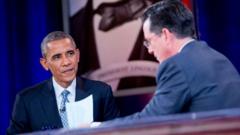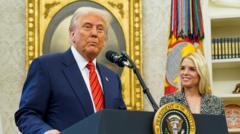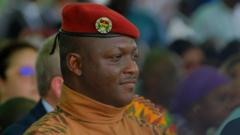The upcoming NATO summit scheduled for June 24-25 in the Netherlands aims for cohesion but is threatened by disagreements, particularly around Ukraine's membership and President Trump's stance on the conflict.
NATO Summit Faces Challenges Amid Leadership Tensions

NATO Summit Faces Challenges Amid Leadership Tensions
As NATO prepares for its annual summit in the Netherlands, uncertainty lingers due to conflicting views on Ukraine from key leaders, including President Trump.
With the NATO summit approaching on June 24-25, the alliance's leadership, led by Secretary General Mark Rutte, stresses the need for a straightforward and united front. European officials have voiced their desire to avoid the disunity seen in previous meetings concerning Ukraine, especially as differing perspectives from influential leaders loom on the horizon.
President Trump, expected to attend, presents a significant complication. His administration's disapproval of Ukraine's NATO aspirations and a shift towards normalizing relations with Russia runs counter to the alliance’s goals. The geopolitical landscape is further complicated by the United States’ withdrawal from its traditional role as Europe’s primary security guarantor, creating an atmosphere of uncertainty regarding troop deployments.
Trump's reduction in support for Ukraine and disinterest in advancing peace talks raise questions about Ukraine's position at the summit. Uncertainty exists over whether Ukrainian President Volodymyr Zelensky will be welcomed at the summit’s opening dinner, despite assurance from new American ambassador to NATO, Matthew G. Whitaker, regarding his attendance.
Overall, the summit presents an opportunity for NATO to confirm its solidarity, but ongoing tensions and divergent viewpoints on the Ukraine conflict may pose challenges to achieving a unified agenda. The coming weeks will be critical as discussions continue on how best to incorporate Ukraine's plight into the summit dialogue.






















